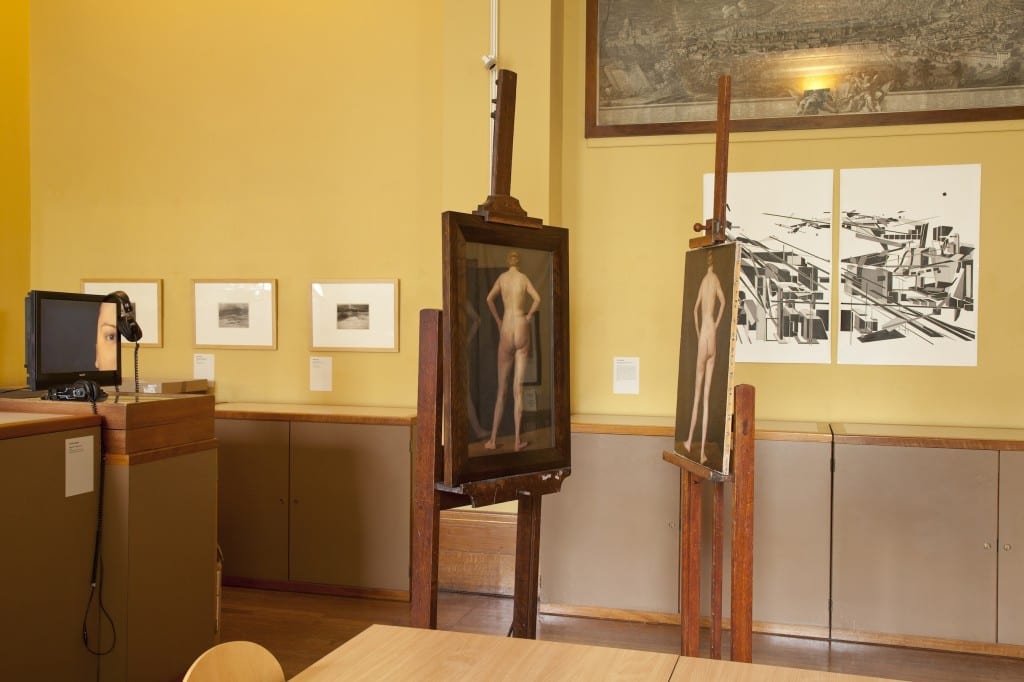Art Not Words: Female Figure Standing, 1913
By Gemma Angel, on 13 August 2012
 by Lisa Plotkin
by Lisa Plotkin
1913 was an interesting year for British women. Militant suffragette violence had reached an all-time high, with dozens of women sent to prison each week in the name of female suffrage. The deeds of the suffragettes became more and more outrageous as time went on, with many smashing windows, setting fires, attacking members of parliament, and just generally causing havoc by doing things that women simply were not supposed to do. Under their militant slogan “deeds not words!” thousands of women joined the cause.
 By 1913 women were doing and not just saying. They may not have had political representation, but they were making political news. They were heavily involved in local politics; they were nurses in larger numbers and doctors in fewer; they were teachers and factory workers; reformers at home and missionaries abroad. In short, they were as diverse in occupation then as women are now. And they were also artists.
By 1913 women were doing and not just saying. They may not have had political representation, but they were making political news. They were heavily involved in local politics; they were nurses in larger numbers and doctors in fewer; they were teachers and factory workers; reformers at home and missionaries abroad. In short, they were as diverse in occupation then as women are now. And they were also artists.
Thia was a fact that UCL’s Art Museum left me no doubt of during their most recent exhibition, in which work from the affiliated Slade School of Art was showcased. Founded in 1871, the Slade School followed UCL’s proud tradition of gender equality and admitted men and women on equal footing, seven years before the University of London allowed women to take examinations.
In 1913 women’s output was limited, constrained by legislative factors and social mores. But in 1913 their artistic output from the Slade was nothing short of astonishing, both in quantity and quality. The featured artists in the recent UCL Art Museum exhibition were tasked with taking historical pieces from the UCL collections, and producing works that somehow comments or speaks to the earlier works.
The two easels grabbed my eye immediately – in fact for me they were really central to the whole exhibition. As you can see from the image below – the piece (by current Slade student Laura Kuch) features two almost completely identical paintings of the backs of nude women. Kuch positioned them as though they were facing back-to-back – their double always invisible – but standing just behind them.

Laura Kuch, Dopplegängers, 2012. Two wooden easels, Dora Carrington, Female Figure Standing, 1913 (framed), Fanny J Fletcher, Female Figure Standing, 1913. © Laura Kuch. Installation shot photographed by Mary Hinkley, UCL Media Services.
But Kuch herself was not the painter of these two works; she discovered them tucked away in UCL storage. This surprised Kuch. Why were there two identical paintings, both labeled “Female Figure Standing, 1913” and why were they attributed to two different artists?
It was later discovered that the two artists, both women students at the Slade in 1913, painted this female figure standing as part of a competition. These two paintings were the first and second place winners. As an historian of Victorian and Edwardian Britain, these two female nudes speak to me. Women artists painted this woman 99 years ago. They competed in a university competition 99 years ago. A woman took off her clothes for a group of artists 99 years ago. Those are all statements about the status of women 99 years ago. It might seem divorced from the larger Woman Question of the time, but it wasn’t.
The great, late poet author Adrienne Rich once wrote: “We are not the Woman Question asked by somebody else; we are the women who ask the questions.”[1] The women artists of the Slade from the 1870s until today posed their questions and stated their answers, through art. Not deeds, not words, but art. And now almost one hundred years later we still get to enjoy it.
References:
[1] Adrienne Rich, “Notes Towards a Politics of Location” in in Blood, Bread, and Poetry: Selected Prose, 1979–1985 (New York: W. W. Norton, 1986).
 Close
Close

